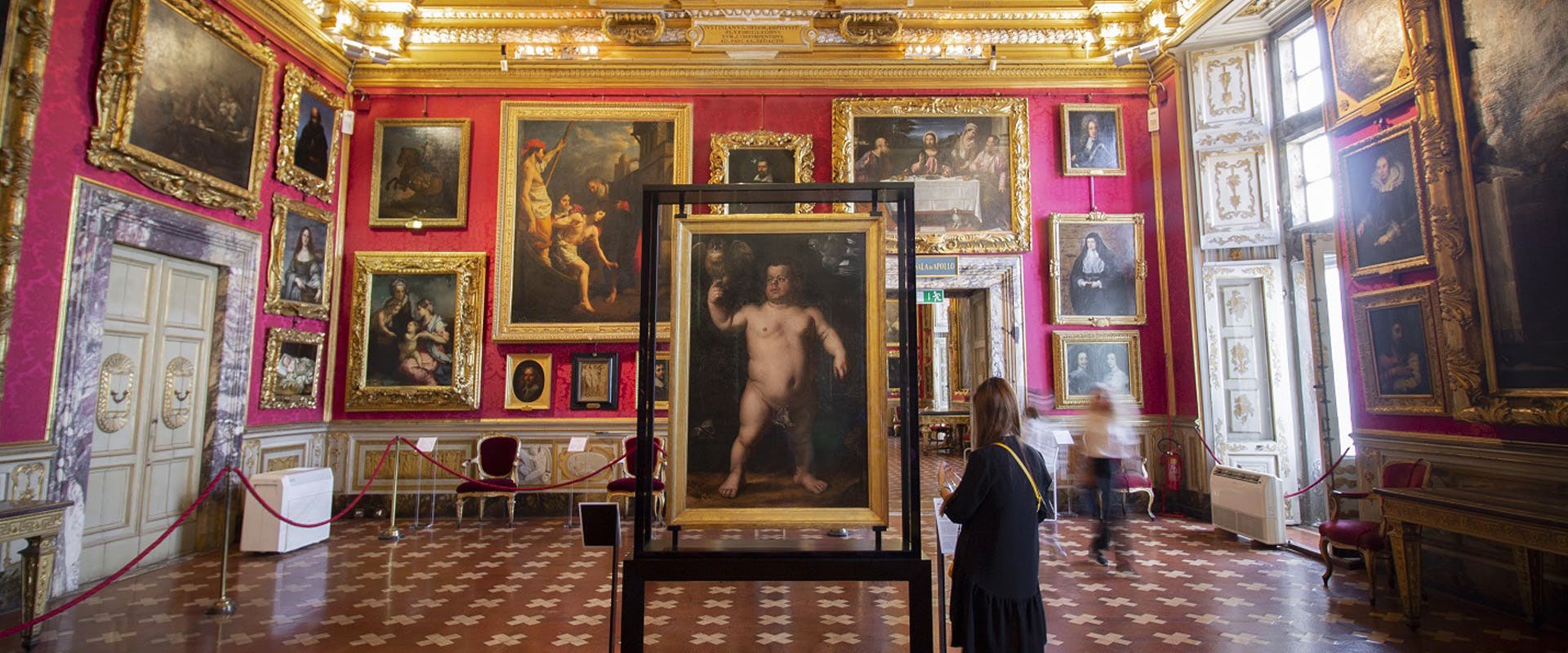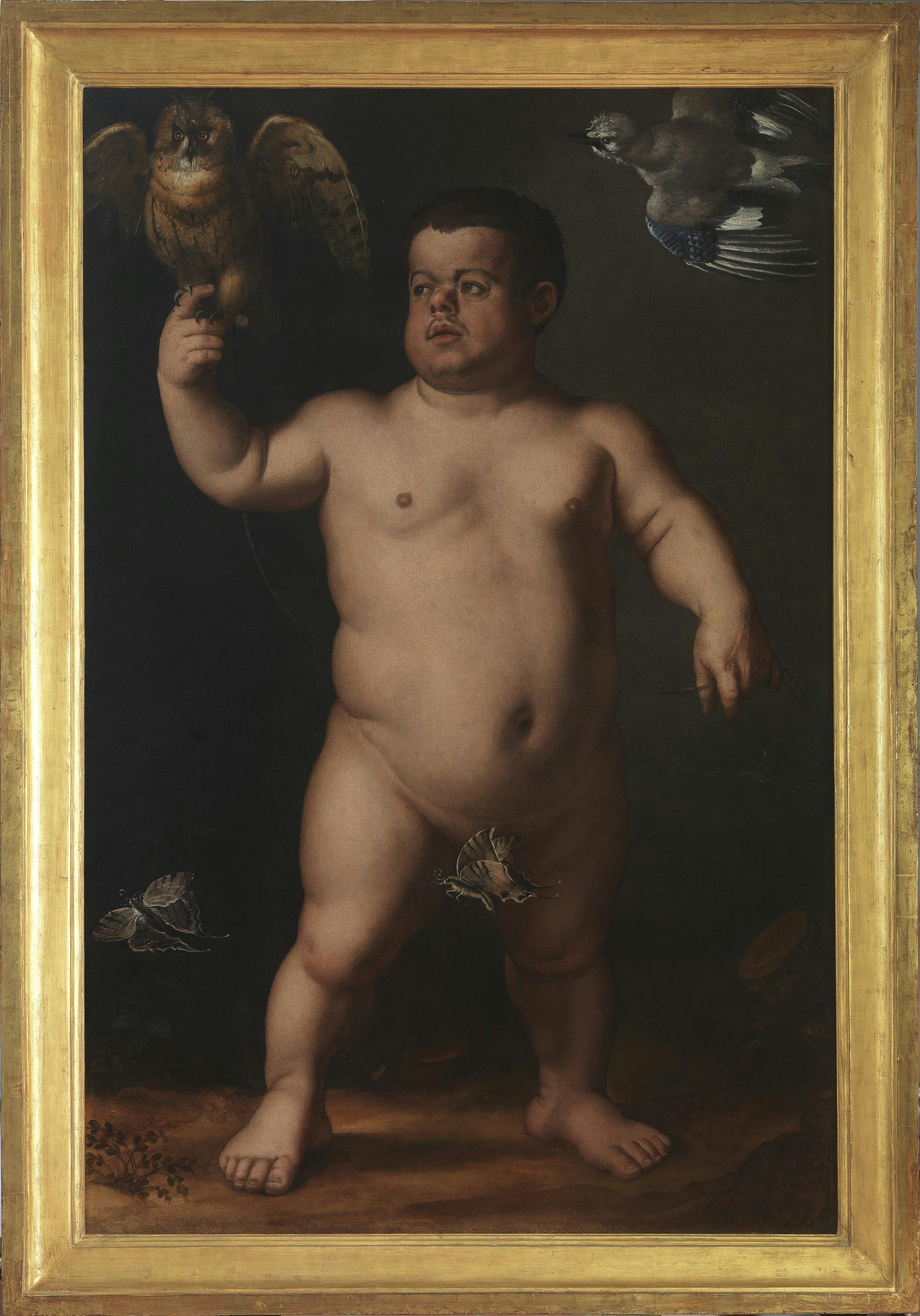Bronzino’s Dwarf Morgante returns to the Pitti Palace
The buffoon of Cosimo I de’ Medici’s court is on display in the middle of Apollo Room in the Palatine Gallery
The portrait of Dwarf Morgante, the most famous of the five buffoons who lived at the court of Cosimo I de’ Medici, returns to the Pitti Palace, the place where this legendary character – then known as Braccio di Bartolo – spent most of his life. “Bronzino then made for Duke Cosimo a full-length portrait of the dwarf Morgante, showed nude, and from two perspectives – namely, with the front on one side of the picture, and the back on the other, presenting the bizarre and monstrous semblance flaunted by that dwarf; whereas Bronzino’s painting, in that genre, is usually beautiful and marvelous” (Vasari, Life of Bronzino). The canvas is painted on both sides; it portrays the dwarf as a “fowler”, or bird-catcher, as he was not allowed to hunt larger animals, this being an activity reserved for characters of higher ranks. The character is portrayed respectively from the front and back at two subequent moments of the action: at the front we see him before the hunt, holding an owl in a snare to be used as a bait to capture a jay that is flying in the air. Two scarce swallowtail butterflies cover his genitals; these were discovered recently, when the painting was last restored. From behind, we see him just about to turn towards the viewer, eager to proudly show off his prey. At the time, Bronzino was embroiled in the debate on “the competition” (the dispute on the supremacy of painting over sculpture). By painting a canvas from various perspectives Bronzino put his money where his mouth was, proving wrong those who favored sculpture in the belief that it offered more points of view.
The portrait is now on display in Apollo Room in the Palatine Gallery. This very fragile work has been transferred to a new display case, featuring state-of-the-art anti-reflective glass and a system of shock absorption. Here, in this permanent location, it is certainly much safer than before. In fact, the vibrations caused by the visitor flows in the centre of the corridor at the Uffizi, where it had been located from 2013 to 2016 in dialogue with the gallery of portraits by the same artist, were a danger to its state of conservation.
Braccio di Bartolo, also called Morgante with paradoxic irony (after the giant who starred in the poem of the same name by Luigi Pulci) was a very popular character during Cosimo I’s rule; he was famous and well-liked because of his sharp, witty tongue. Vasari even quoted him in his Lives and, over time, he became the subject of many masterpieces celebrated today. In addition to Bronzino’s dual-sided portrait, other works featuring Morgante worth a mention include the marble sculpture by Valerio Cioli for the Bacchino Fountain in the Boboli Gardens, which portrays him straddling a turtle, and the bronze sculpture by Giambologna for the small fountain in the roof garden of the Loggia dei Lanzi, which depicts him riding a sea monster and is on view in the Bargello Museum today. Giambologna emphasizes the role played by Morgante in Cosimo I’s life by portraying him at the foot of the equestrian monument of the Grand Duke in Piazza della Signoria, as he participates – annoying others, as his role required him to – at the coronation ceremony of his lord.
During the 19th century, Bronzino’s painting was heavily restored, which turned the dwarf into the god Bacchus, perhaps because the nudity of the figure was considered more appropriate for a mythological character. A vine crown was therefore added to his head, his hips and genitals were hidden by another garland of vine leaves and bunches of grapes, and the owl was repainted, becoming a glass of wine. These additions were only removed in 2010, during a delicate operation that finally restored the original appearance to the canvas, at last allowing Dwarf Morgante to regain his dignity as a bird catcher, celebrated by historical sources.
“The chronicles say that Braccio di Bartolo had a complex and witty personality. He was charming and sometimes even litigious – explains the Director of the Uffizi Galleries, Eike Schmidt. – He was one of the protagonists of the court’s social and political life and was very dear to Cosimo I, whose 500th birthday will be celebrated this year. The installation of his portrait painted by Bronzino (who was undoubtedly the top painter of that court) in the Pitti Palace is, therefore, not only a museological event, but also a celebration. And, overall, it is an operation designed to safeguard such a fragile work from the risk of the paint detaching from the canvas”.

